It’s hard to imagine now, but there was a time when San Francisco was considered a working-class town. It had always been home to a generous share of bohemians, dilettantes and tycoons, of course – but it had also been the city of unchallenged union power, the general strike and rough-hewn but familial neighborhoods spilling from the Fillmore District to Potrero Hill. It’s where even Jack Kerouac worked as a brakeman for Southern Pacific.
“Anyone who disappears,” says a character in The Picture of Dorian Gray, “is said to be seen at San Francisco. It must be a delightful city and possess all the attractions of the next world.” Generations of Americans in search of reinventing themselves have agreed – along with those simply searching to invent. This latter group of “tech bros, hipsters and yoga yuppies” is the focus of Alexandra Pelosi’s 40-minute documentary, currently viewable on HBO TV and its streaming platforms.


Wisconsin Governor Scott Walker may have dropped out of the presidential race, but his influence is still haunting public workers, as evidenced by a bill that now sits on the desk of California Governor Jerry Brown. That legislation, SB 331 or the Civic Reporting Openness in Negotiations Efficiency Act (CRONEY), is the latest flashpoint in an ongoing war that Walker helped trigger when he moved to roll back the rights of public employee unions in early 2011.
While Walker was met with a huge backlash that drew protesters from across the country, in Orange County, local officials saw a green light to advance their own agenda against organized labor. Just a week after Walker signed Act 10, eviscerating collective bargaining rights for government workers in Wisconsin, the city of Costa Mesa issued layoff notices to nearly half its employees, paving the way for the outsourcing of hundreds of union jobs.
» Read more about: The Ghost of Scott Walker Visits Jerry Brown »
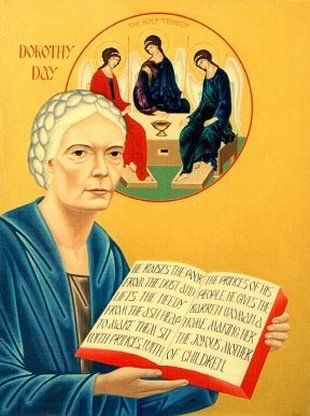

In his speech to Congress, Pope Francis praised Dorothy Day — along with Abraham Lincoln, Martin Luther King Jr., and Thomas Merton — as one of four “representatives of the American people” whom he admired.
Pope Francis was probably the first pope to mention Day’s name in public. It is unlikely that anyone else who addressed Congress in the past had uttered her name.
No doubt most members of Congress — and most Americans watching the speech on television or listening on the radio — had never heard of her. Many of them would have had to Google her on their iPhones and tablets. Some of them — like House Speaker John Boehner, the arch-conservative who invited Pope Francis to speak to Congress — might not have been pleased with what they discovered.
Day (1897-1980) founded the Catholic Worker movement on the principles of militant pacifism, radical economic redistribution,


“How do you spell your name?” asked the beltway woman staring at her laptop in the lobby of a lavish Southern California resort. Was she Googling me? I tried not to panic. Instead, playing up the jetlag, I quipped that I really did know my name by heart and gave her one of my business cards that said I was a consultant. Then I realized she was typing my name to put on my badge. Casually she handed me my lanyard, schedule and swag bag.
I was in!
Why are reporters barred from attending the Community Financial Services Association of America (CFSA) annual conference? Why all the secrecy? The organization says full disclosure and transparency are part of their best practices – but no media or streaming are allowed at its annual shindig. This is a $46 billion dollar industry based on subprime (they now call it nonprime) customers —
» Read more about: Payday Lenders: 'We're Not Bottom Feeders!' »
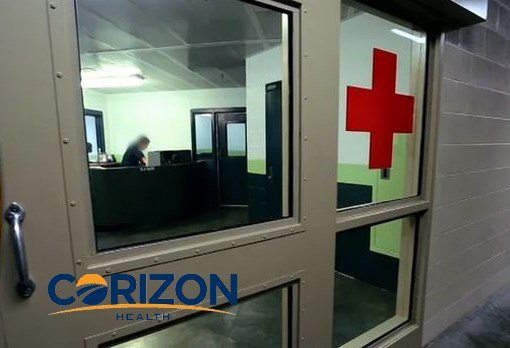

Two court orders and the most expensive wrongful death settlement in California history should be enough. But not for Corizon, a corrections health care company owned by a private equity firm.
For seven months earlier this year, Mario Martinez, a prisoner in Corizon’s care at the Dublin, California Santa Rita Jail, suffered from asthma that kept getting worse. A judge issued two court orders requiring the company to provide Mario urgently needed surgery, but they didn’t operate. While Mario suffered, Corizon even settled a lawsuit for $8.3 million with the family of a prisoner who, five years earlier at the same jail, had died in the company’s care.
In July, Mario suffered an asthma attack, collapsed in his cell and died.
Mario’s mother, Tanti Martinez, had hoped to bring her son’s story to Pope Francis, who on Sunday visited a Philadelphia jail that also contracts with Corizon.
» Read more about: Cruel and Unusual Punishment: Private Correctional Health Care »


Twenty-six-year-old Takele Gobena is part of the “on-demand” economy, working full-time as a driver for Uber and part time for Lyft. The Ethiopian immigrant quit his job at the Seattle-Tacoma International Airport and purchased a new car to drive for the ride-hailing firms, believing it would make him a better provider for his one-year-old daughter. Instead, Gobena now finds himself in debt and, after expenses, making well below minimum wage. But because Uber and Lyft drivers are classified as independent contractors, Gobena is not protected by minimum wage laws.
Gobena’s plight is an increasingly familiar one. A new report from the National Employment Law Project, “Rights on Demand: Ensuring Workplace Standards and Worker Security In the On-Demand Economy,” highlights the problems so many on-demand workers face: “Characterizing workers as non-employees has serious negative consequences for them: non-employees have no statutory right to minimum wage, overtime pay,


In the 1947 science fiction novel Greener Than You Think, a scientist invents a powerful fertilizer intended to boost crop production and combat hunger. The salesman she hires, however, sees more business potential in lawn care, and convinces a Los Angeles homeowner to try the formula on a yellowing, “sad and sickly” front yard. When the salesman stops back the next day, the lawn is transformed. “There wasn’t a single bare spot visible in the whole lush, healthy, expanse. And it was green. Green . . . over every inch of its soft, undulating surface: a pale apple green where the blades waved to expose its underparts and a rich, dazzling emerald on top.”[i]
The lawn grows uncontrollably in the novel, and the grass ultimately takes revenge and crushes cities like a green giant. Whether or not author Ward Moore chose the L.A.
» Read more about: Drought Lawns: The Ungreening of Los Angeles »


As major climate legislation that would dramatically increase our investment in renewable energy approaches the Governor’s desk, this is a critical time to be thinking about low-income communities, including South Los Angeles, for whom the benefits of renewable energy investment have been largely out of reach.
The Los Angeles Alliance for a New Economy (LAANE), in partnership with my organization, Strategic Concepts in Organizing and Policy Education (SCOPE), recently conducted an analysis of the L.A. Department of Water and Power’s most established renewable energy program, the Solar Incentives Program (SIP). We found that this residential rooftop solar initiative has left South L.A. behind, along with Wilmington, Boyle Heights, Pacoima and other communities.
This program offers incentives for residents who buy and install their own rooftop solar energy systems from private solar companies. In the past 15 years, LADWP has invested more than $115 million of ratepayer funds to support the development of residential rooftop solar.
» Read more about: Realizing the Promise of Solar for South Los Angeles »
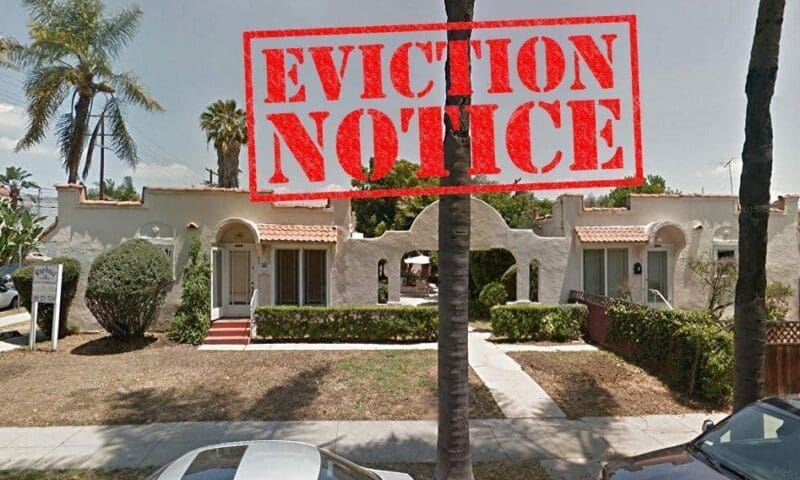

Thanks to the determined efforts of tenant activists and area residents, real estate developer Matthew Jacobs’ plan to demolish eight affordable housing units in the Fairfax District and replace them with “luxury” living accommodations has been put on hold—for now. Jacobs (who recently resigned from his chairman post at the California Housing Finance Agency), his business partner Guy Penini and their company, Bulldog LLC, had already begun demolition of the rent-controlled bungalow structures located at 750-756 N. Edinburgh Avenue (where they used the Ellis Act to evict eight families), when the city abruptly halted their tear-down undertaking.
Tenant activist Steve Luftman, who lives in another Jacobs-owned building that was also slated for the wrecking ball, is involved in the Edinburgh preservation project — just as he was for the building that he lives in. Luftman’s Flores Street apartment complex was designed by noted architect Mendel Meyer,
» Read more about: Historic, Affordable Bungalows Saved from Wrecking Ball »


It was 2008 and presidential hopeful Barack Obama was inspiring millions of people with his promise to disrupt politics as usual – and a new startup called Airbnb was turning that enthusiasm for change into millions of dollars. Denver, the site of that year’s Democratic National Convention, was expecting 80,000 people to come watch the senator from Illinois accept his party’s nomination. The city had space for less than half.
“Obama supporters can host other Obama supporters,” is what CEO Brian Chesky recalls thinking to himself. In a profile of the company, the Huffington Post notes how that idea was turned into cash. “Airbnb, which lets users rent out part or all of their homes, blasted bloggers in Denver with company information.” It “sold ‘Obama O’s’ cereal around town,” garnering news coverage as “an innovative solution to the city’s lodging crisis.”
Founded in 2007, Airbnb is today valued at more than $25 billion and the for-profit sharing economy it helped usher in is no longer so new.
» Read more about: The Sharing Economy's Liberal Lobbyists »


Next spring, the U.S. Supreme Court will decide a case that could threaten the economy and American democracy. Friedrichs v. California Teachers Association asks the justices to consider overturning a 1977 Supreme Court unanimous ruling (Abood v. Detroit Board of Education) that protected the right of teachers, nurses, librarians, firefighters and other public workers to form unions. The Abood case emphasized that these workers act as the middle class’ backbone by providing quality public services and ensuring healthy communities.
In Abood, the Court ruled that every public worker who benefits from collective bargaining could be required to pay their fair share for those efforts. It’s a basic democratic principle.
For a preview of what will happen if the Court sides with the plaintiffs in Friedrichs, we should look at Wisconsin. In 2011,
» Read more about: The Supreme Court and "Friedrichs" — Lessons From Wisconsin »
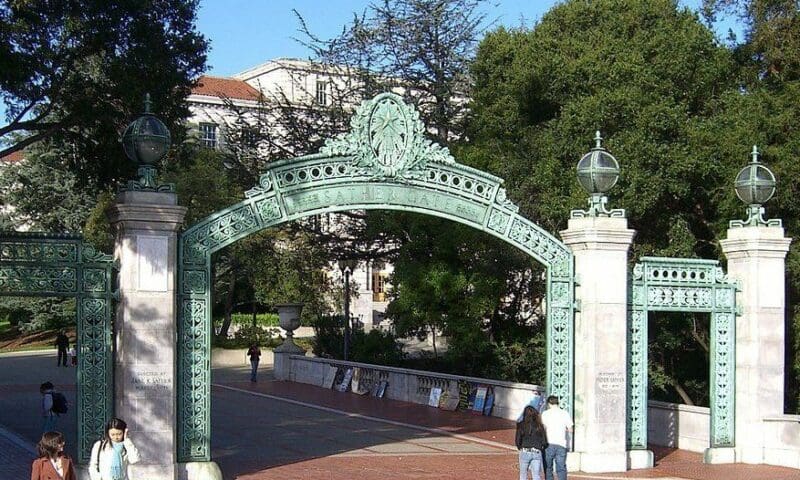

When California Governor Pat Brown helped create the modern University of California system in the early 1960s, he envisioned many things: a world-class structure of higher education, universal access to students from every background, a gateway to middle-class careers, cutting-edge research centers. All of that has come to pass, making UC an enduring part of Brown’s legacy.
One thing Brown did not foresee, however, was UC becoming embroiled in an emblematic fight over economic inequality, with critics charging that one of the nation’s most prestigious public institutions is perpetuating poverty.
The controversy over UC’s use of thousands of contract workers who earn low wages with few, if any, benefits has taken center stage in Sacramento, where legislation that would end such practices cleared the Legislature last week. The fate of Senate Bill 376, sponsored by state Senator Ricardo Lara (D-Bell Gardens), now rests with Pat Brown’s son,
» Read more about: Jerry Brown’s University of California Perma-Temp Problem »


Like a charismatic politician whose flaws have yet to be exposed, the so-called sharing economy enjoyed a meteoric rise to fame and success. Uber, Lyft, Airbnb — these companies emerged seemingly from nowhere to become economic and cultural powerhouses, and to challenge the prevailing structure of their respective industries.
But 2015 has not been as kind to Uber and its brethren, as the fascination with a new business model has given way to serious concerns over everything from public safety to worker exploitation to unfair market monopolization. In some ways this is not surprising — the honeymoon for startups can be notoriously brief.
But something larger is at play here. In the age of rampant income inequality, the overhyped promises of the sharing economy are running headlong into a growing desire by Americans for a caring economy.
There’s a reason why even Republican presidential candidates,
» Read more about: Uber and Airbnb: A 'Sharing' Economy for Whom? »
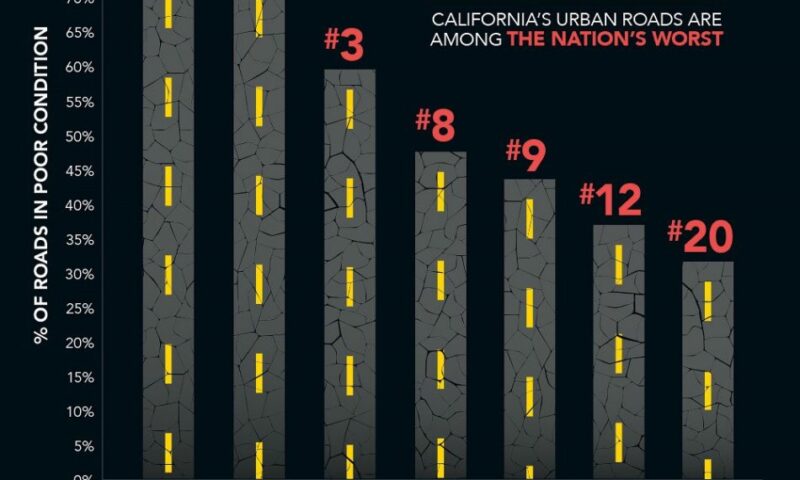
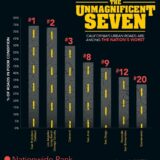
Lucy Dunn has a message for Republican lawmakers: Approve new revenue now to fix California’s decaying highway and bridge system or face severe economic consequences that will be felt throughout the state for decades.
Dunn is no big-spending liberal and you won’t find a Proud to Be Union bumper sticker on her car. In fact, she’s president of the influential Orange County Business Council and a card-carrying Republican. But to Dunn, funding long-neglected transportation maintenance and repairs is an existential issue for California’s business community.
“If you can’t move people and goods on safe roads and bridges, you cannot do business in the state,” Dunn tells Capital & Main.
California ranks 45th among the 50 states for overall highway performance.
This fundamental lesson was brought to urgent life in July, when a bridge collapsed along Interstate 10 during heavy rains,
» Read more about: Can a Business-Labor Alliance Save California’s Infrastructure? »


Disabled and elderly Californians have cause to worry as time marches forward to June 30, 2016. That’s the deadline for Governor Jerry Brown and state legislators to find a permanent solution to keep whole one of California’s largest assistance programs for the state’s most vulnerable populations.
For this fiscal year, a seven percent cut– $226 million–was restored to the In-Home Supportive Services (IHSS) program in June. But without solid funding for the future, nearly a million adults, children and their caregivers face losing hours of service and wages again.
The restoration of the cuts was a huge victory for consumers of IHSS’s services, according to Brandi Wolf, California policy director for the United Long Term Care Workers (ULTCW), “but living from year to year [involves] a tremendous amount of uncertainty. We can’t ask consumers to live in this uncertain world.” ULTCW, an affiliate of the Service Employees International Union, represents many IHSS workers.
» Read more about: Vulnerable Home Care Recipients Fear Losing Services—Again »


In 1936, during the throes of the Great Depression, FDR addressed a deeply divided and economically insecure nation on the eve of Labor Day:
“There are those who fail to read both the signs of the times and American history. They would try to refuse the worker any effective power to bargain collectively, to earn a decent livelihood and to acquire security. It is those short-sighted ones, not labor, who threaten this country with that class dissension which in other countries has led to dictatorship and the establishment of fear and hatred as the dominant emotions in human life.”
The parallels to what’s happening today are remarkable.
While the circumstances differ from now, the insecurity so many felt in 1936 is as strong as it was then. It exists across sectors. It exists regardless of geography. It exists because the wealthy few have reaped the rewards of our labor without sharing the prosperity.
» Read more about: This Labor Day Unions Remain a Beacon of Hope for Millions »
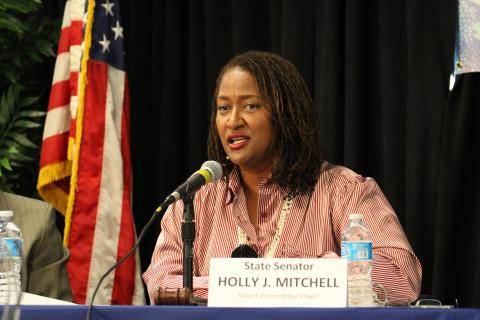

According to a Sacramento Bee story published today, California State Senator Holly Mitchell (D-Los Angeles) has dropped her campaign to pass Senate Bill 23, which would have repealed the Maximum Family Grant rule, a 20-year-old law that blocked state welfare services for children born to mothers who receive welfare. The Bee’s Capitol Alert story reported,
Mitchell’s bill is currently awaiting a vote on the Assembly floor, and she said she would instead push to get the policy into next year’s budget.
“How would we pay for it?” Mitchell said. “Because of the huge price tag, I’m going to continue working with the administration during the interim.”
Writing in Capital & Main, Judith Lewis Mernit recently described the Maximum Family Grant rule as “a relic of a 1990s-era conservative belief that women were deliberately having more babies just to rake in more benefits,
» Read more about: Holly Mitchell Drops Bid to Restore Child Welfare Cuts »


As the edge of summer burns into early autumn, students across the country are going back to school. Most are returning to friends and meeting teachers, but students at Illinois’ Barrington High School are arriving this year to signs that read, “Can’t live on $8.50,” and shouts of “Devuelvenos nuestros salarios!” (Give us back our wages!)
A majority of the school’s contracted janitors—organized by the Service Employees International Union—are striking because, after the Barrington school district renewed a contract with its employer in June, their wages were cut from $9.77 an hour. Already without sick days and health insurance, the janitors are now faced with even lower poverty wages.
As our publication, Making the Grade? Questions to Ask About School Services Privatization, discusses, school districts often don’t save money when they outsource support positions rather than keep them in-house. When contractors aim to maximize profit,
» Read more about: Outsourcing: Maximum Profits, Minimum Standards »


Though we tend to associate it with barbecues and retail sales, Labor Day is a holiday honoring the American labor movement. And an easy way to celebrate the movement that brought us the minimum wage, an 8-hour workday and an end to child labor is by buying Sam Adams, Doritos, and other union-made nosh for Monday’s get-togethers.
All the products listed below are made by unionized workers . You can find a more comprehensive list over at the website Labor 411.
Chips & Dip
Tostitos Chips, Salsas, and Dips
Mission Chips, Salsas, and Dips
Doritos
Cheetos
Fritos
Rold Gold Pretzels
Meat & Buns
Ball Park franks
Hebrew National franks
Oscar Meyer & Boar’s Head hot dogs
Sara Lee buns
Oroweat buns
Condiments
Heinz Ketchup
French’s Mustard
Vlasic (Relish,
» Read more about: A Labor-Friendly Shopping List for Labor Day »
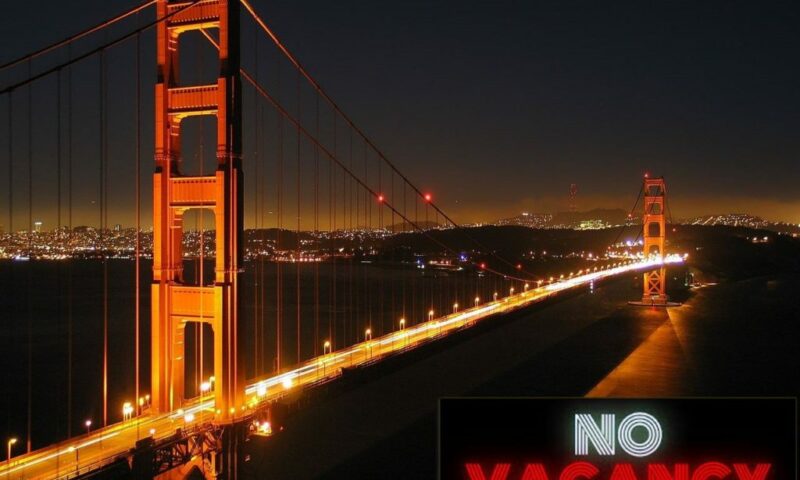
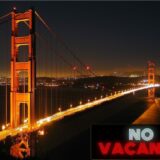
For some people, renting a house or apartment in San Francisco is easy. If your gross pay adds up to $200,000 a year, for example, you might feel fine about sinking a third of this year’s salary into a bright, one-bedroom South Beach loft, or a two-bedroom loft with a view in the Castro District . On less money – say, around $100,000 in take-home pay – you could reasonably afford a Union Square studio, or a 550-square-foot studio for $2,800 in Pacific Heights. Even if you invest no more than a third of your income in rent (the traditionally recommended ceiling), you could live in a one-bedroom apartment in Ingleside, near the San Francisco State University campus. You would have options.
But say you actually work on campus — as a teacher, librarian or groundskeeper. Say you want to go to school there, and not have to commute more than a dozen miles in the morning.
» Read more about: San Francisco Professors and Students Face Staggering Rents »